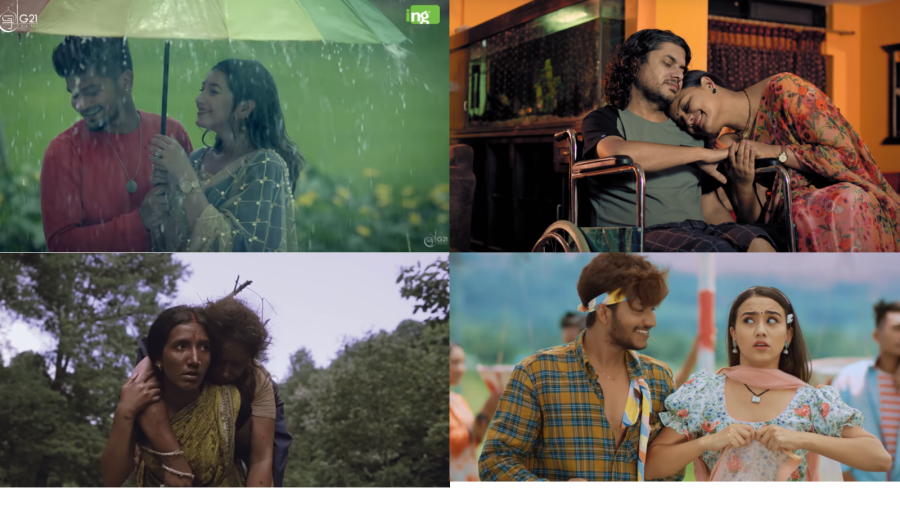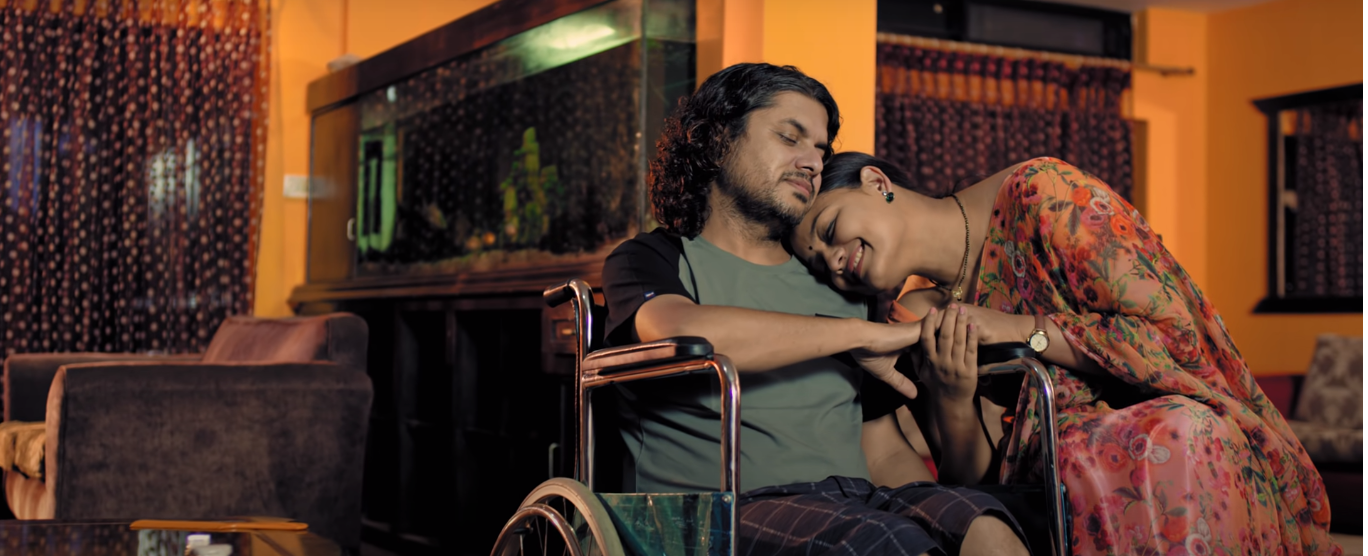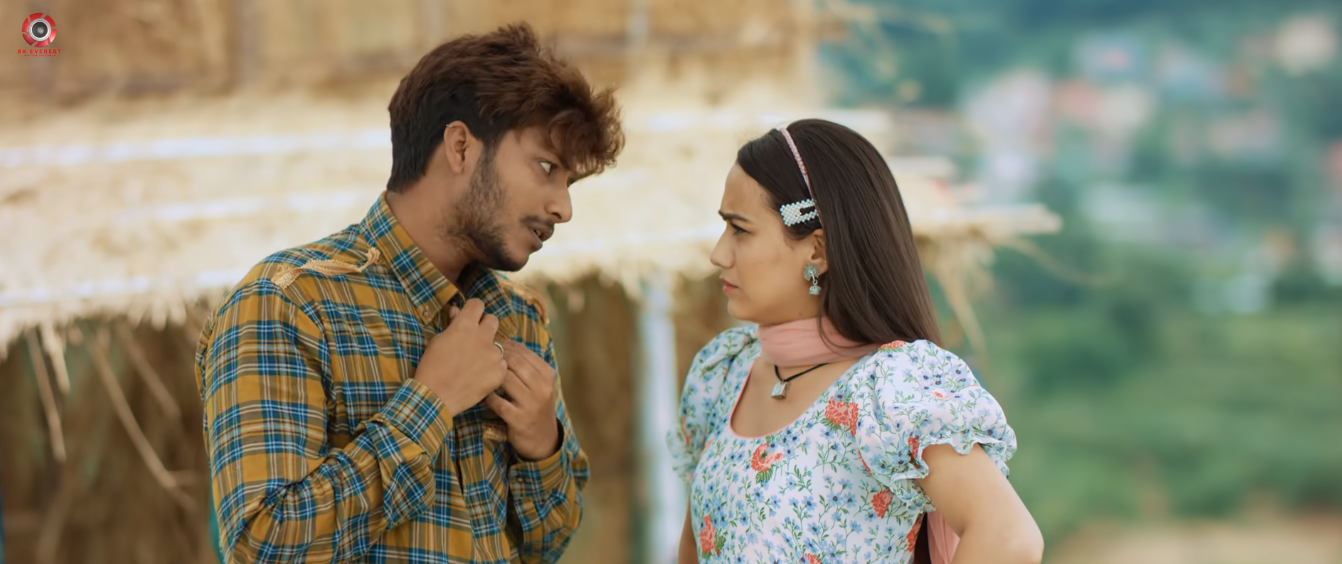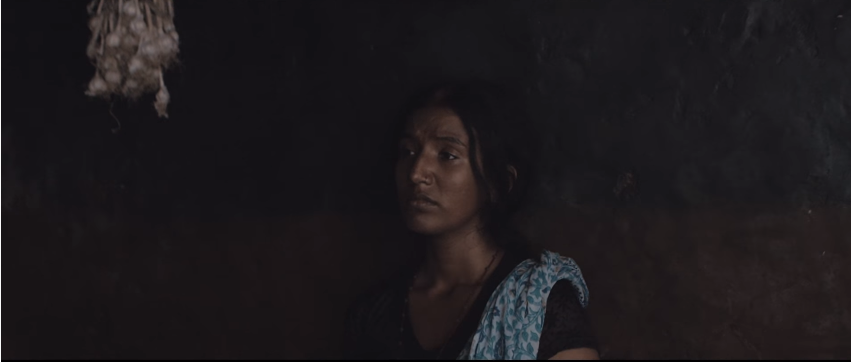Entertainment
In the ever-growing cinematic landscape, where do Nepali music videos stand?
The Post examines some of the most recent Nepali music videos to find out where our music video industry stands in terms of aesthetics and cinematic technicalities.
Ankit Khadgi
It was in 1985 when Nepal had its own first music video. It was directed by musician Sambhujeet Baskota, and the art of captivating the audience with music videos has since gone through an evolution, with its many ups and downs.
Videos of classic hits like Hongkong Pokhara, Maya, Adhuro Prem, and Maya Ko Dori Le have stayed with the audience as much as the songs. Even the most recent songs, like K Maya Lagcha, have the perfect mix of music, lyrics, and visuals, transporting viewers into a few minutes of nostalgia, bliss, and good spirits.
But there have been equally insubstantial music videos that reek of sexism, unimaginative and uninspiring aesthetics and technicalities in our music scene.
For this week, the Post reviews and examines four of the latest Nepali music videos released on YouTube last month to find out where our music video industry stands in terms of aesthetics and cinematic technicalities.
Chhati Chirera by Pramod Kharel

Released on September 28, Chhati Chirera is a melancholic tune depicting two lovers, whose lives take a dramatic turn after one fateful incident. Starring Pramod Kharel, who's the lyricist as well as the singer, and popular actor Reeccha Sharma, who plays his lover, the music video is directed by Deepak Acharya.
At the beginning of the song, we see Kharel and Sharma happily smiling and resting on each other’s shoulders. Cut to the next scene, the happy moment of them is now a distant memory that can be only cherished through old photos, and Kharel is now sitting in a wheelchair.
Until the second verse plays, we don’t know what happened to Kharel in the second scene. But midway in the video, it can be assumed that the reason why he is in a wheelchair now is because he might have received some injuries in his legs when an earthquake occurred. But this is unclear. Even the ending and tonality of the song are so convoluted and messy that the overall impact of the song collapses like an infirm building in an earthquake. The lyrics too do not do much to help the video.
But there are some elements in the music video that deserve applause. For instance, the placement of characters on the screen and the camera movement is clever. In most of the scenes, where we see both of the characters in a vulnerable state, Sharma is always on the right side, whereas Kharel on the left.
This distinct mise-en-scene, of placing the actors on the basis of their emotional state and strength, is always successful in evoking the required emotions of the audience as well as reflecting the persona of the character.
Lajjawati Jhar by Asmita Adhikari and Mahesh Kafle

Released on September 7, Lajjawati Jhar is a cheerful song, depicting the love between two polar opposites. The song, which is directed by Asif Shah, features Aanchal Sharma, for whom, emerging singer, and a former participant of Nepal Idol, Asmita Adhikari, has lent her voice as well Mahesh Kafle, who’s also the singer, writer, and the music director.
The premise of the song is simple. A bubbly and outgoing girl (an archetype that has been repeatedly used in movies) played by Aanchal Sharma likes her neighbour, played by Kafle, who unlike her, is shy and timid.
Hence, in the first verse, she sings, ‘Lajjawati jhar jastai lajauchau’ meaning Kafle's character is as shy as a Lajjawati plant (Mimosa Pudica or the Touch Me Not plant), as whenever she attempts to get closer to him, like the Lajjawati plant, which closes and distances itself, Kafle’s character also does the same in the song.
One thing that should be appreciated in the song is it’s writing. The lyrics are cleverly crafted and perfectly reflect the persona of the two characters.
The acting performances are also good, as both actors bring the required nuances for their characters. Even the use of setting is pleasant, as it enhances the overall look of the music video.
However, there are a few shortcomings in the music video. A few scenes that could have been reshot for failing to be logical. For instance, in a few scenes, the lights in the background are visible. Similarly, in a rain scene, where both are dancing, not even a drop of water can be seen in their clothes. Such minor—but important—details have been overlooked.
Muna by Raaz Khambu & Sujata Verma

If the makers of Muna were thinking of having other names for the song, Saali Man Paryo 2.0 would have been a great option because honestly there’s nothing new with this song.
Like the 2019 song, which featured a grown man expressing his ‘playful’ attraction towards his saali (sister-in-law), the premise is the same. Even the saali, played by Swastima Khadka, in both the songs is the same. Here, her bhinaju (brother-in-law), however, is Najit Hussen, and the sister is played by Riyasha Dahal.
There’s nothing substantial to talk about the music video, which is directed by Shann Thapa. The lyrics of the song, sung by Raaz Khambu and Sujata Verma, are unimaginative, and it follows the same pattern of using the groovy beat to appease the entertainment value of the audience.
For a song to have an objective of entertaining the listeners, making them feel like dancing is harmless. But what is definitely wrong or should be a matter of concern is the value these songs add and its lyrics, especially when they attempt to normalise problematic euphemisms like ‘Saali adhi ghar wali’ (sisters-in-law are like half-wives).
The makers can argue that this is just a playful song, where saali and bhinaju are pulling each other’s legs. But is it justifiable that, in the name of entertainment and teasing, we are normalising sexist euphemisms and problematic behaviour towards women?
Udai Lanchu by Wayam

A recent release, Udai Lanchu, by Wayam, chronicles the life of a distraught family, who has lost a family member, who worked as a migrant worker. The issue and the narrative the music video put forwards is heartbreaking.
Thousands of Nepalis either lose their lives or ‘disappear’ in foreign countries and the government doesn’t do much to change the scenario. And this sensitive issue is portrayed in the music video directed by Barkha Mukhiya, and featuring Srijana Regmi and Laxmi Giri, as the wife and the mother of migrant labour, is well-shot and the hard work is visible.
The cinematography, colours, and the use of lights and even using the settings in the narrative are satisfactory. There are many heartfelt moments in the song that evokes an emotion of empathy among the viewers for those distraught families who couldn't even see their children and their partners for the last time, which means the actors have done a commendable job.
One particular scene that stands out is when the mother accepts the truth, which is beautifully depicted in the song. In the beginning, we are shown that mother is covering the windows, with the help of dried grass, which symbolises that she wants to stay in dark—meaning she isn't ready to accept the truth.
However, when the daughter-in-law, while she’s asleep, takes the scare-crow-like structure away from her, she comes closer to the truth that her child has departed his soul and will never return to her. She then goes near the window and starts removing the dried grass, and rays of light enter into her room, which symbolises her acceptance of reality about his death.
But regardless of the message, the use of blackface makeup on the actors is problematic and compromises the intention and integrity of the song.
Just because someone is from a rural area and is economically poor, is it justifiable for the makers to use blackface makeup? By deploying this rather racist archetype of using darker shades on actors, and reinforcing the notions of white superiority, this time-worn technique somehow lessens the overall impact of the song, written by Susant Bista.




 5.8°C Kathmandu
5.8°C Kathmandu










